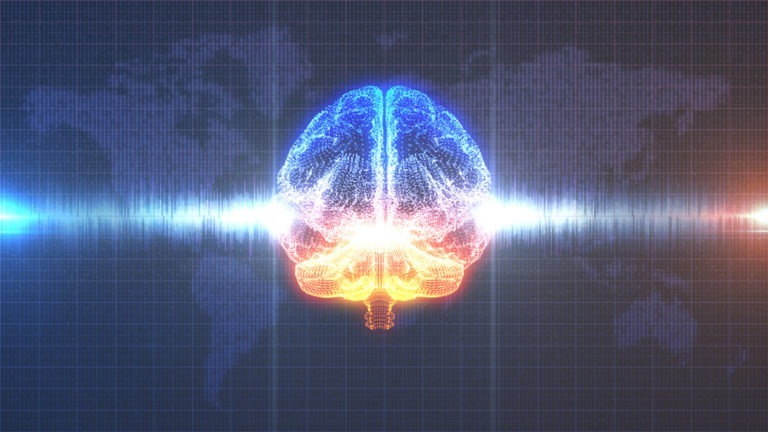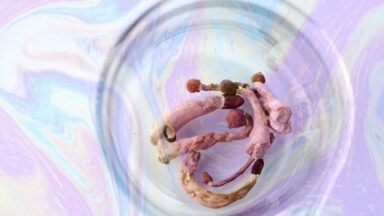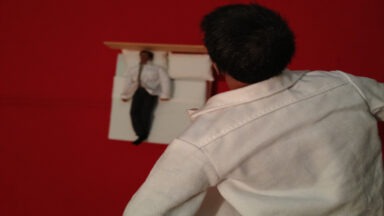Joe Dispenza’s REWIRED; Using Neuroplasticity to Heal the Body

What does it mean to be “supernatural?” How many people have actually thought about this question, and thought about it deeply? For those who really want to delve into the awe and wonder of life, and appreciate the relationship between mind and body, Dr. Joe Dispenza's newest series teaches “how we can be greater than our bodies” through a neural rewiring process backed by scientific evidence.
As a researcher, Dispenza utilizes the latest findings from the fields of neuroscience, epigenetics, and quantum physics to explore the science behind spontaneous remissions. He shows how people can use their minds to heal themselves of illnesses, chronic conditions, and even terminal diseases to enjoy a more fulfilled life while also evolving their consciousness. His formula for change can even be applied to genetic predispositions.
He notes that being supernatural means it is possible to change some future event and “be greater than time.”
Healing with the Mind
Dispenza, who has gained notoriety by leading thousands in group meditative experiences, brings the essence of the supernatural to his audience; something that was maybe once thought possible only to yogis or ascetic masters who devoted entire lifetimes to spiritual study. But through his teachings, Dispenza has proven that each person has the ability to heal with the mind and shift one’s destiny from deleterious to supernatural.
Dispenza discusses his own experiences that changed his life and worldview, enabling him to lead others to their own sense of empowerment — to awaken the supernatural within them. He experienced a serious injury, out of which he melded his scientific knowledge, his healing abilities, and his insight into the mind’s role in creating and changing reality.
Making New Brain Connections
Dispenza’s original series just premiered on Gaia, and it gives people the tools to use their minds actively instead of passively to manifest their full potential. The series is called “Rewired,” and in it, Dispenza explores how the brain, via the frontal lobe, works as an inventor, thinker, speculator, learner, and decision-maker. And every time we learn something new, new synaptic connections are made.
According to neuroscience, says Dispenza, an hour of focus a day can double the number of connections in the brain. This can be taken as evidence that our interaction with our environments changes and grows our brains. The new information that we learn is stored in the neocortex, which grows in a process called neurplasticity.
University of Washington’s Eric Chudler, Ph.D., explained, “Plasticity, or neuroplasticity, describes how experiences reorganize neural pathways in the brain. Long lasting functional changes in the brain occur when we learn new things or memorize new information… To illustrate plasticity,…imagine making an impression of a coin in a lump of clay. In order for the impression of the coin to appear in the clay, changes must occur in the clay — the shape of the clay changes as the coin is pressed into the clay. Similarly, the neural circuitry in the brain must reorganize in response to experience or sensory stimulation.”
Dispenza proposes that if we think the same thoughts every day, “everything stays the same in the body.” But new thoughts that lead to new behaviors and experiences begin to change the human biology, including the brain itself. Thus, says Dispenza, when you change, everything changes around you.”
One of the greatest factors that currently adversely affects the brain in 70 percent of all people, Dispenza says, is stress. The toll on the body comes from not only the hormonal effects of stress, but also the lack of focus that it causes — and focus is what’s needed for brain plasticity. Stress makes the brain fire out of order, incoherently. “And when the brain is incoherent, you’re incoherent; when the brain isn’t working right, you’re not working right.”
The solution is in your thinking
So what’s the solution to fixing the brain-body imbalance? Dispenza offers a formula that anyone can apply to “rewire” the brain so that it builds health actively rather than breaks down health passively. The feat seems rather supernatural, but it is within everyone’s grasp. It is a matter of “reinstalling the hardware in your brain.”
“Rewired” offers an entry into the fascinating world that merges science with ancient wisdom. The mind is an innate tool that is seldom used as our greatest health-promoting asset. After watching Dispenza’s videos, viewers come away with an idea of how to “get past the memory of themselves,” and this is the first step in becoming “supernatural.”
The Pineal Gland’s Spiritual Connection With the Third Eye Chakra

The third eye is our greatest gift to connect us to source and remind us of a universe much more mystical than we can perceive with our physical senses. It’s through the awakening of the third eye and its corresponding pineal gland that we’re able to attain supernatural feats of telepathy, psychic vision, and an intimate connection with God.
Rare is a conversation on higher consciousness without a mention of the pineal gland. Its prevalence is more than a fad; it’s an imperative first step to attaining our full human potential.
What is the Pineal Gland?
The pineal gland, often referred to as the “third eye” in Eastern esoteric religions (Hinduism, Buddhism, and Taoism), is a pea-sized endocrine gland located deep in the center of the brain, between the two hemispheres. In Western medicine, it is an organ primarily recognized for its role in regulating the body’s circadian rhythms and melatonin production, which helps regulate sleep-wake cycles. The pineal gland also plays a part in the body’s response to light and darkness, influencing mood, energy levels, and overall well-being. While it holds significant physiological importance, some spiritual practices also attribute metaphysical qualities to the pineal gland, linking it to intuition, perception, and spiritual enlightenment.
The Pineal Gland and Third Eye Chakra
The chakra system is the way the spirit moves within the physical body—how the spirit animates form. The chakras can be imagined as wheels of energy to remain balanced and open for optimal human function. If stagnation appears within the chakra system, the physical body will be affected by unease, depression, and even illness.
Chakras are energy centers, whereas organs have defined locations. The chakras are ruled by the organs but are not confined to a specific location. The heart chakra, for instance, is in the center of the chest, while the physical heart is on the left side. Similarly, the third eye chakra is located in the center of the forehead near the pineal gland.
The pineal gland is known as the third eye chakra or ajna chakra in the Hindu system. A closed ajna (i.e. mind) is said to lead to confusion, uncertainty, cynicism, and pessimism.
Every esoteric tradition heralded the third eye as our connection to spirit. It’s the space between humans and God, moving us from the isolation experienced in the human condition—through an open and vibrant third eye, we find our highest source of ethereal energy. A return path to God is offered when one works to expand third-eye awareness.




































